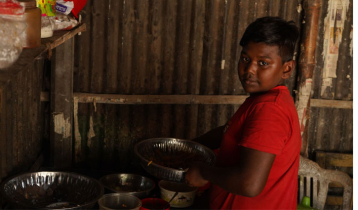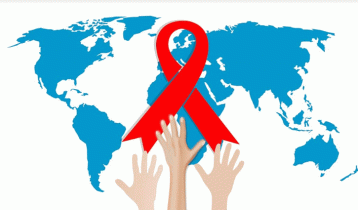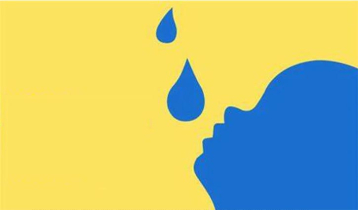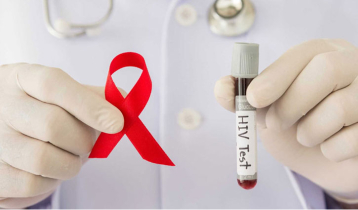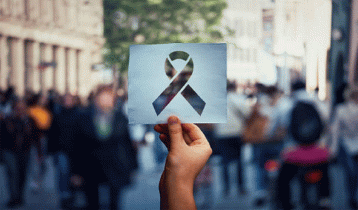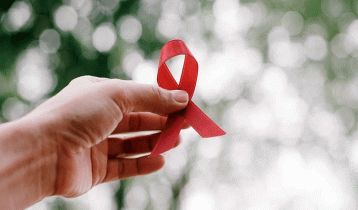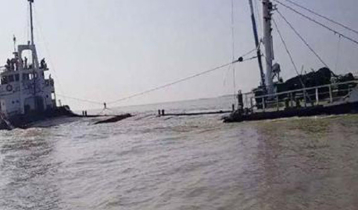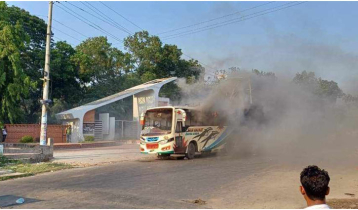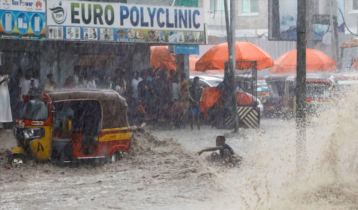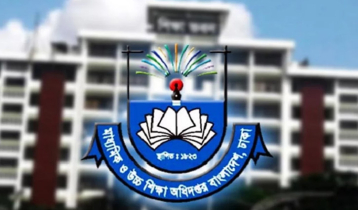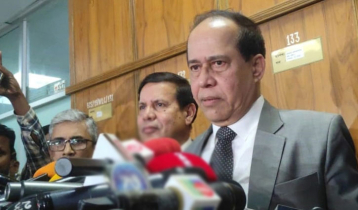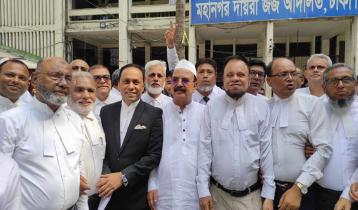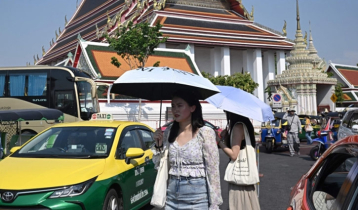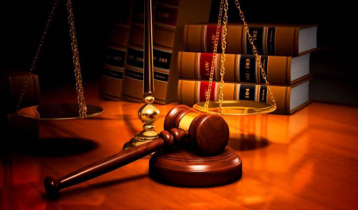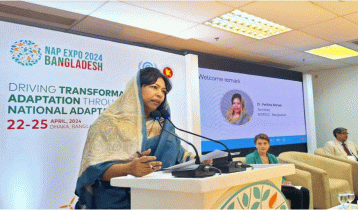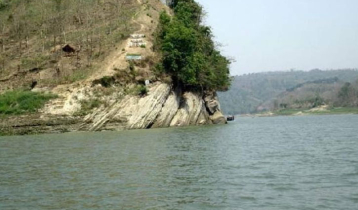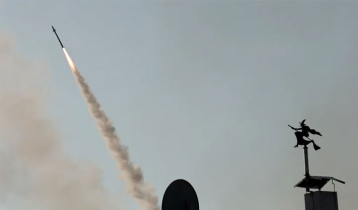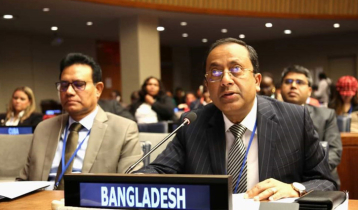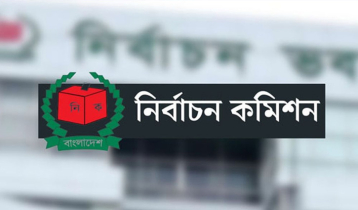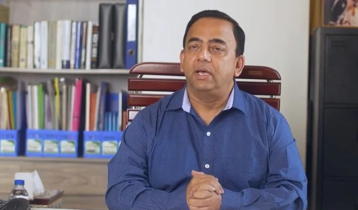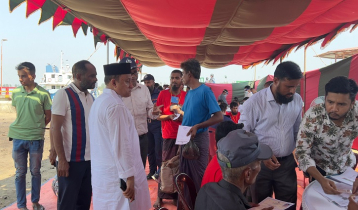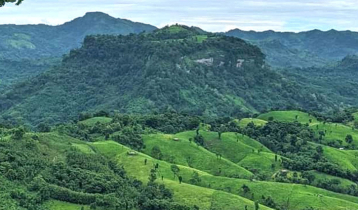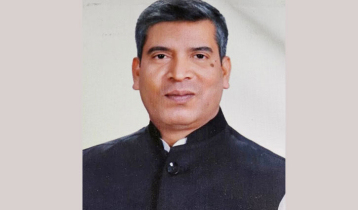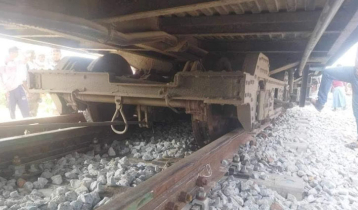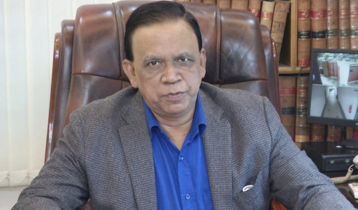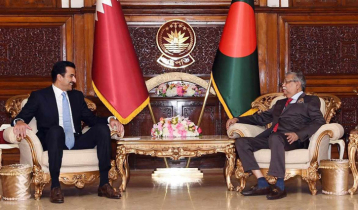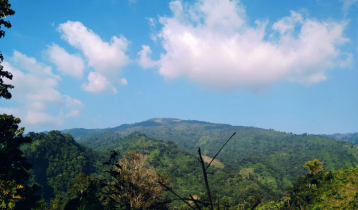Hiroshima tragedy: Radiation scaring people still now
Aminul || risingbd.com
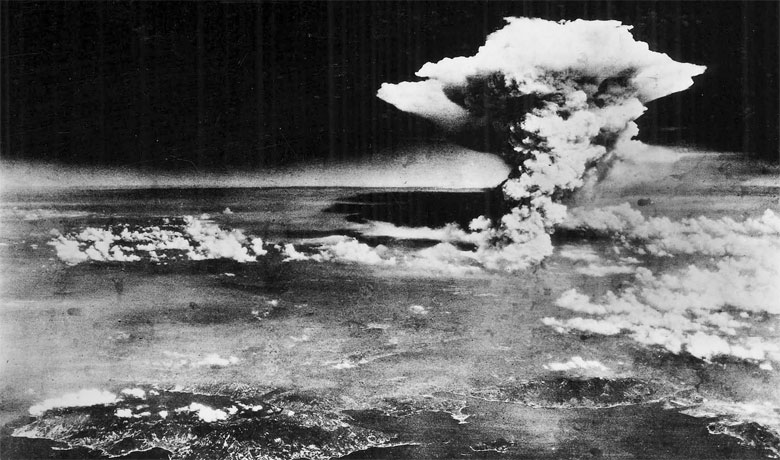
Aminul Islam: On August 6, 1945, an American B-29 bomber named the Enola Gay left the island of Tinian for Hiroshima, Japan. The one of the two bombings, which killed at least 140,000 people, was the first use of nuclear weapons for warfare in history.
Hiroshima was chosen as the primary target since it had remained largely untouched by bombing raids, and the bomb’s effects could be clearly measured. While President Truman had hoped for a purely military target, some advisers believed that bombing an urban area might break the fighting will of the Japanese people.
Hiroshima was a major port and a military headquarters, and therefore a strategic target. Also, visual bombing, rather than radar, would be used so that photographs of the damage could be taken.
A T-shaped bridge at the junction of the Honkawa and Motoyasu rivers near downtown Hiroshima was the target. At 8:15 am, Little Boy exploded, instantly killing 80,000 to 140,000 people and seriously injuring 100,000 more. The bomb exploded some 1,900 feet above the center of the city, over Shima Surgical Hospital, some 70 yards southeast of the Industrial Promotional Hall (now known as the Atomic Bomb Dome).
Crewmembers of the Enola Gay saw a column of smoke rising fast and intense fires springing up. The burst temperature was estimated to reach over a million degrees Celsius, which ignited the surrounding air, forming a fireball some 840 feet in diameter. Eyewitnesses more than 5 miles away said its brightness exceeded the sun tenfold.
In less than one second, the fireball had expanded to 900 feet. The blast wave shattered windows for a distance of ten miles and was felt as far away as 37 miles. Over two-thirds of Hiroshima’s buildings were demolished. The hundreds of fires, ignited by the thermal pulse, combined to produce a firestorm that had incinerated everything within about 4.4 miles of ground zero.
To the crew of the Enola Gay, Hiroshima had disappeared under a thick, churning foam of flames and smoke. The co-pilot, Captain Robert Lewis, commented, “My God, what have we done?”
About 30 minutes after the explosion, a heavy rain began falling in areas to the northwest of the city. This “black rain” was full of dirt, dust, soot and highly radioactive particles that were sucked up into the air at the time of the explosion and during the fire. It caused contamination even in areas that were remote from the explosion.
Radio stations went off the air, and the main line telegraph had stopped working just north of Hiroshima. Chaotic reports of a horrific explosion came from several railway stops close to the city and were transmitted to the Headquarters of the Japanese General Staff.
Military headquarters personnel tried to contact the Army Control Station in Hiroshima and were met with complete silence. The Japanese were puzzled. They knew that no large enemy raid could have occurred, and no sizeable store of explosives was in Hiroshima at that time, yet terrible rumors were starting.
A young officer of the Japanese General Staff was instructed to fly immediately to Hiroshima, to land, survey the damage and return to Tokyo with reliable information for the staff. Headquarters doubted that anything serious had occurred, but the rumors were building. When the staff officer in his plane was nearly 100 miles (160 km) from Hiroshima, he and his pilot noticed a huge cloud of smoke from the bomb. In the bright afternoon, the remains of Hiroshima were burning.
The plane soon reached the city and circled it. A great scar on the land was still burning, covered by a heavy cloud of smoke. They landed south of Hiroshima, and the staff officer immediately began to organize relief measures, after reporting to Tokyo.
Infrastructure Damage:
Hiroshima was in ruins. The T-bridge’s barriers had been knocked awry; utility poles stood at odd angles, and familiar landmarks were gone or unrecognizable. Buildings—even strong modern structures—had suffered significant damage, some pushed off their foundations, some gutted by fire, others utterly destroyed.
Many steel and concrete buildings appeared intact at first glance, but their outer walls hid internal damage due to the downward pressure of the air burst. Cemeteries were uprooted, and churches had become rubble.
Psychological Damage:
In the late 1950’s, psychologists in Hiroshima and Nagasaki reported increased complaints among survivors of neurotic symptoms, including general fatigue, amnesia, and lack of concentration…After surveys were given to survivors.
Additional symptoms included, “…recalling the occurrence and becoming upset, experiencing an increased sense of unresponsiveness and immobility, and feeling guilt and discouragement.”
PTSD (Post Traumatic Stress Disorder) symptoms include: nightmares, flashbacks, intense anxiety, feeling numb, anger and irritability, insomnia, having trouble concentrating, depression, suicidal thoughts.
Physical Damage:
The survivors, known as hibakusha, sought relief from their injuries. However, 90 percent of all medical personnel were killed or disabled, and the remaining medical supplies quickly ran out. Many survivors began to notice the effects of exposure to the bomb’s radiation.
Their symptoms ranged from nausea, bleeding and loss of hair, to death. Flash burns, a susceptibility to leukemia, cataracts and malignant tumors were some of the other effects.
-Cancer, especially leukemia and lymphoma
–Small brain size
–Mental retardation
–Lower IQ
–Delayed development
–Blindness
–Spinal Bifida
–Cleft palate
–Also, NOT in babies (ie. those already alive when the bomb was dropped): Horrible scarring; increase in breast cancer in women and men; thyroid problems; hair loss; diarrhea.
Radiation Effects and keloids:
Hair loss is caused by exposure to radiation while some people severely burned from the thermal radiation. Severe keloids, or scarring, caused by thermal radiation.
Thermal Burns:
The burns are in a pattern corresponding to the dark portions of the kimono she was wearing at the time of the explosion.
Meet the Little Boy:
Length: 120.0 inches (10 feet / 3.0 meters)
Diameter: 28.0 inches (71.1 cm)
Weight: 9,700 lbs (4,400 kg)
Yield: 15 kiltons (+/- 20%)
In essence, the Little Boy design consisted of a gun that fired one mass of uranium 235 at another mass of uranium 235, thus creating a supercritical mass. A crucial requirement was that the pieces be brought together in a time shorter than the time between spontaneous fissions.
Once the two pieces of uranium are brought together, the initiator introduces a burst of neutrons and the chain reaction begins, continuing until the energy released becomes so great that the bomb simply blows itself apart.
Three-day later, on August 9, 1945, another American B-29 bomber, Bock’s Car, left Tinian carrying Fat Man, a plutonium implosion-type bomb. The bomb hit Nagasaki. Like Hiroshima, the immediate aftermath in Nagasaki was a nightmare. More than forty percent of the city was destroyed.
risingbd/Aug 06, 2015/Aminul
risingbd.com

